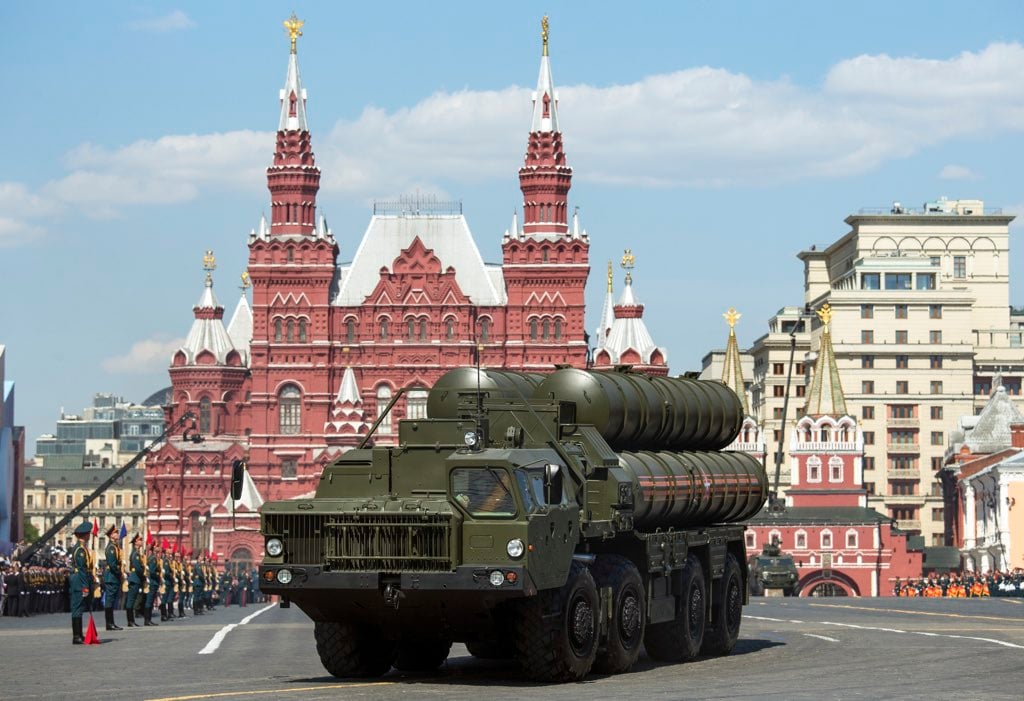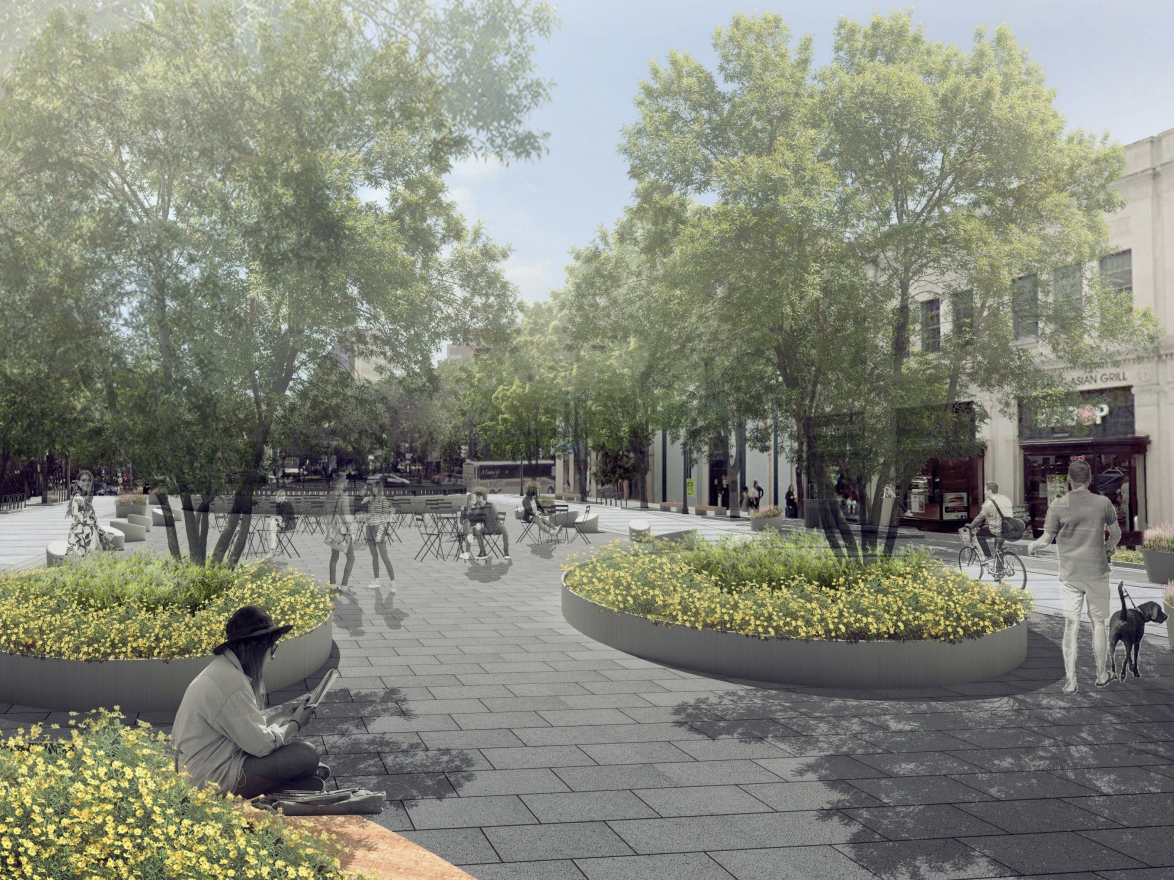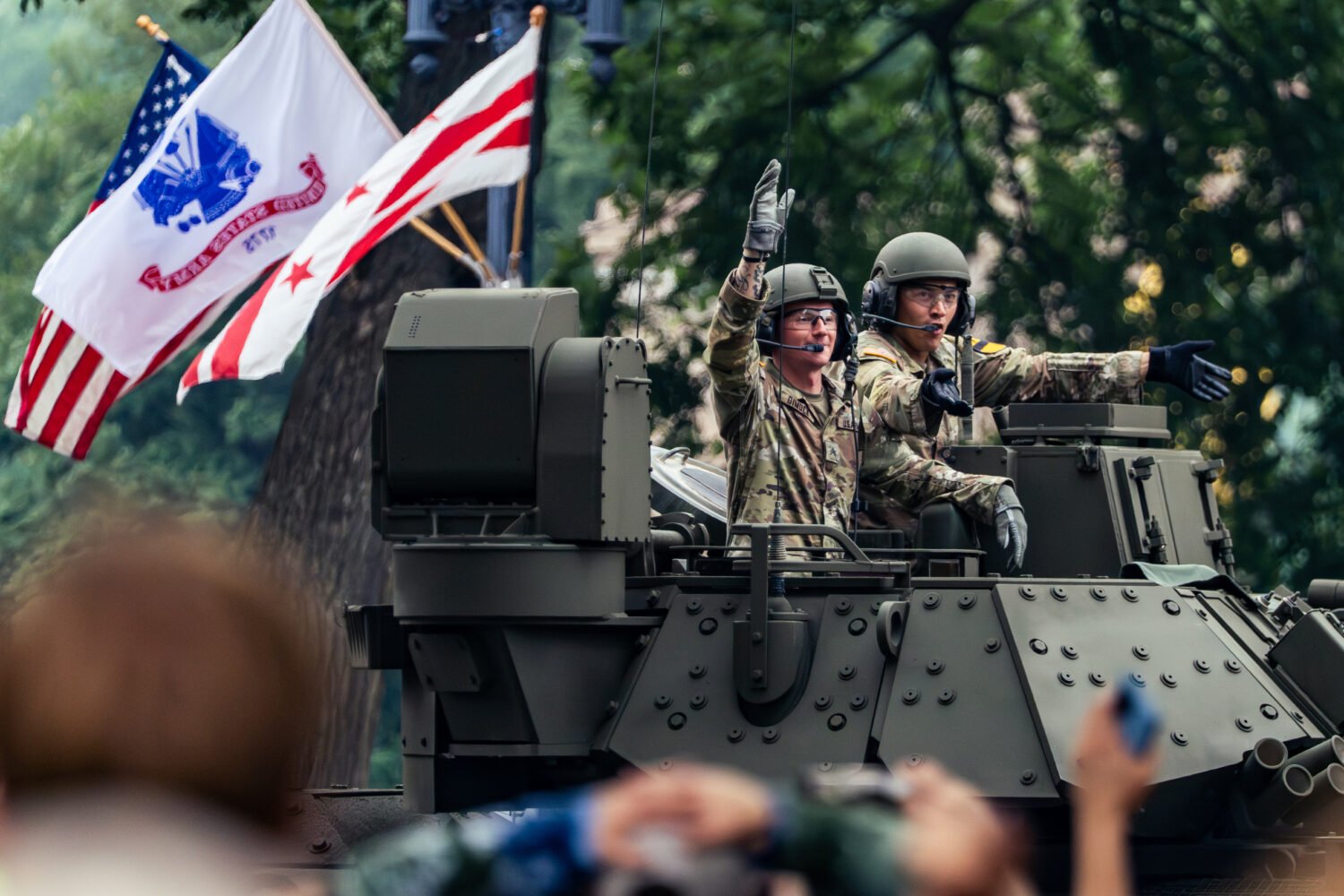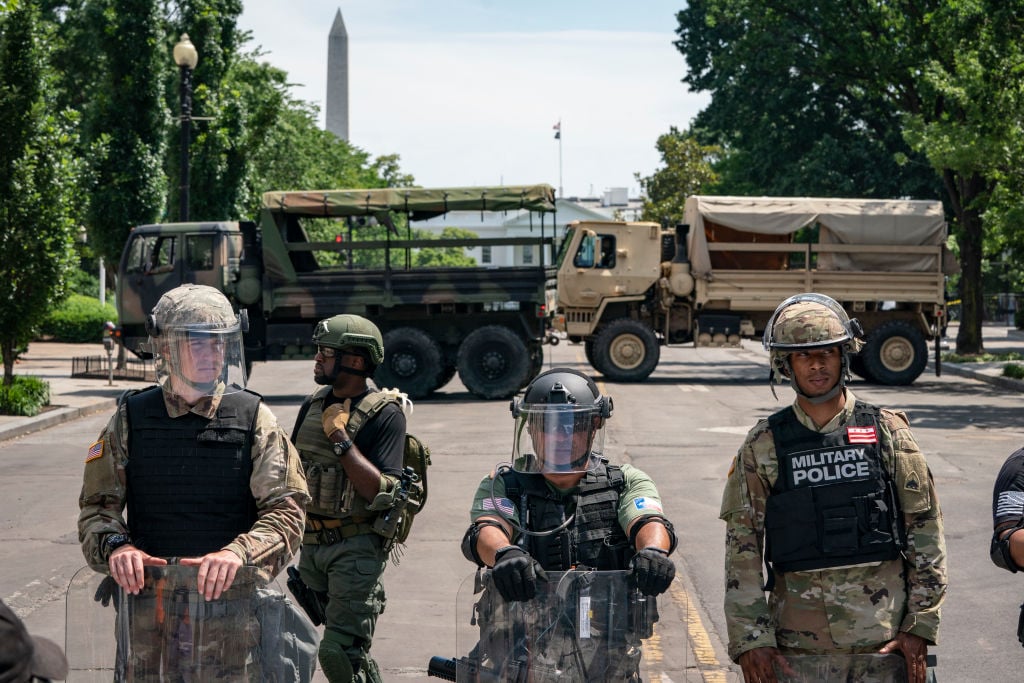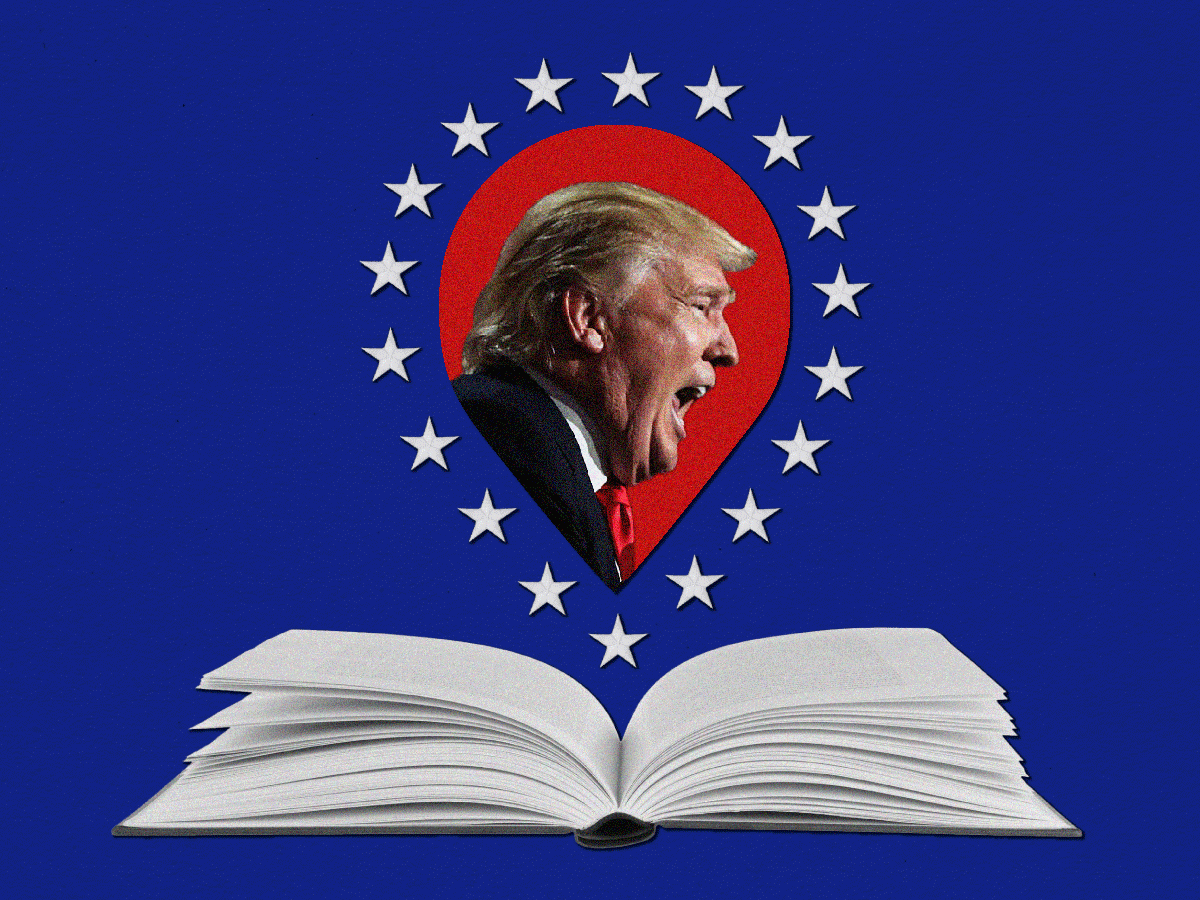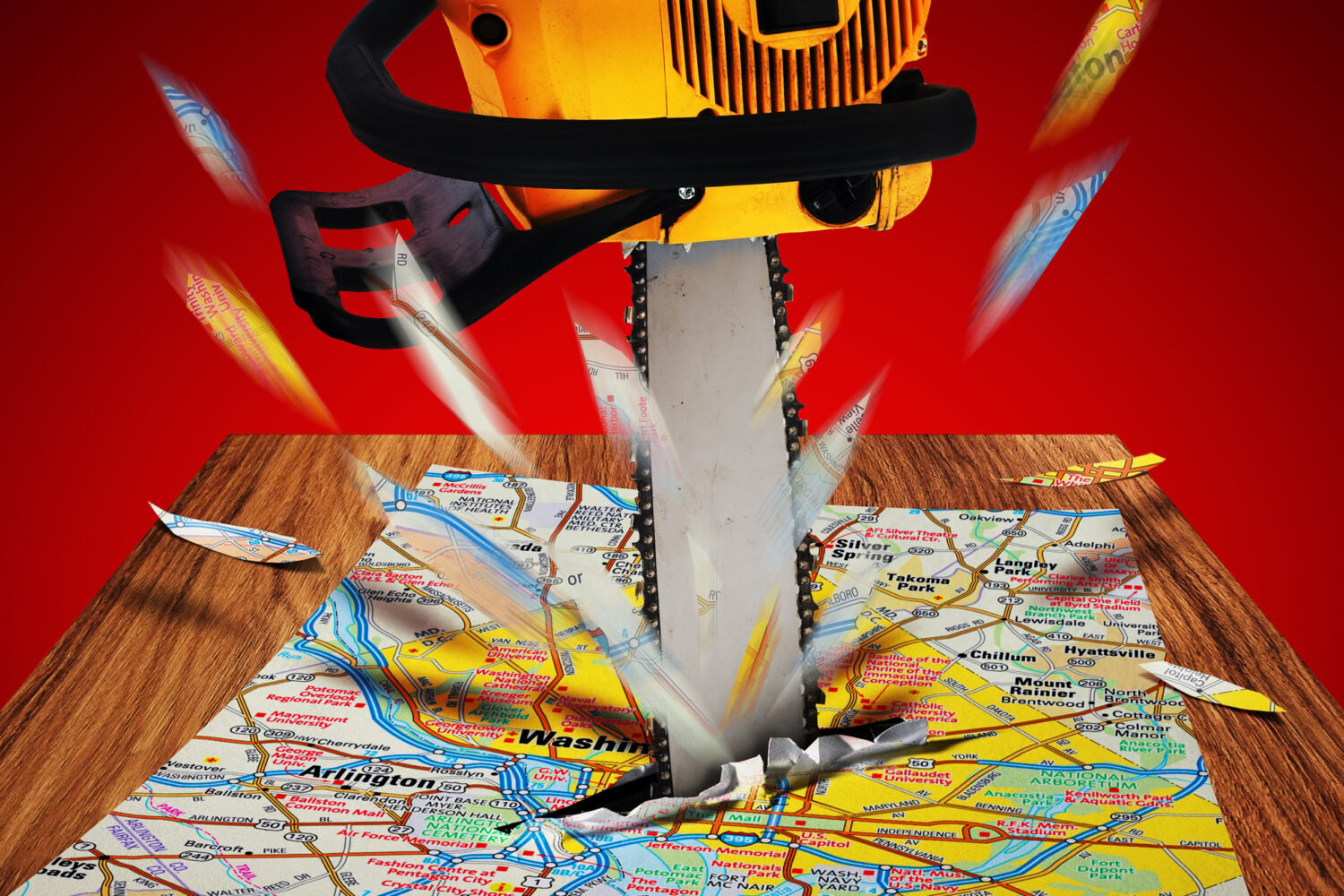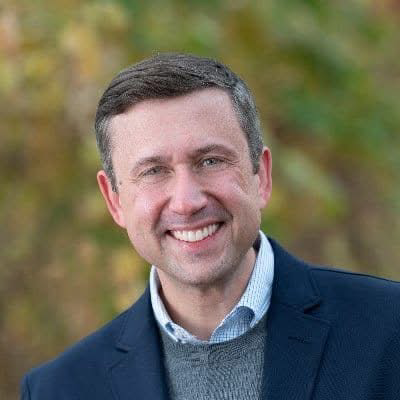In an interview Wednesday with the Washington Post, President-elect Donald Trump was asked just exactly how he plans to make good on his promise to make America great again. One potential he floated to the Post‘s Karen Tumulty: military parades in DC and New York showing off the armed forces’ human and materiel strength.
The Post reports:
“Being a great president has to do with a lot of things, but one of them is being a great cheerleader for the country,” Trump said. “And we’re going to show the people as we build up our military, we’re going to display our military.
“That military may come marching down Pennsylvania Avenue. That military may be flying over New York City and Washington, D.C., for parades. I mean, we’re going to be showing our military,” he added.
While Trump says later in the interview that he has other plans for fulfilling his campaign slogan, the suggestion of military parades in DC feels a little, well, foreign. There are plenty of parades in Washington that include military participation, including those on July 4 and Memorial Day, to say nothing of the one on Friday that will follow Trump’s swearing-in.
But the uniformed elements of those parades tend to be limited to companies on foot and mounted units, with the rest of the processions filled out by the usual festive retinue of marching bands, classic cars, local affinity groups, and floats. And even then, the military presences in those events are designed to allow spectators to show their appreciation for service members, not as a show of martial force.
Full-blown military parades are a staple in Moscow, where nearly every May 9 since 1965, the Soviet and later Russian military marches in force, with tanks, missiles, and aircraft to commemorate the end of the Great Patriotic War (also known as World War II). The most recent iteration featured about 10,000 troops, 135 armored vehicles, 71 aircraft, and a speech by Russian President Vladimir Putin that included an apparent criticism of US support for rebel groups in Syria.
To be sure, one does not need to look to autocracies to find regularly scheduled military-review parades: France stages one every July 14 to mark Bastille Day, India holds one every January 26 for Republic Day, and Mexico puts one on every September 16 to mark its independence.
Such displays are rare in the United States, though, and typically reserved for the immediate aftermath of successful military operations. The last time DC hosted a military parade complete with troops, tanks, and other armored vehicles was June 8, 1991, when about 200,000 spectators lined Constitution Avenue to mark the end of Operation Desert Storm. General Norman Schwarzkopf, who commanded US forces in the first war in Iraq, led a procession of 8,000 troops in combat uniforms, Bradley Fighting Vehicles, and M1 Abrams tanks that passed by a reviewing stand holding President George H.W. Bush and administration officials. (Schwarzkopf also led an even bigger parade two days later in New York.)
But even that one parade—the largest of its kind since World War II—was a bit much for some in a nation not accustomed to regular domestic shows of military might. “The celebration has been going on longer than the war,” Colorado Representative Patricia Schroeder told the Los Angeles Times.
Even a Gulf War veteran spotted the potential political currency in the parade: “The parade is sort of a campaign boost for Bush and the Republicans,” Army veteran Jeff Benton told the Times.
Bush lost his campaign the following year, but in the decades since, the Republican Party has done a better job at staking out military appreciation as part of its political identity. Not that United States needed the GOP or Donald Trump to arouse its appreciation of the armed forces: large public assemblies—from sports events to concerts to mainstream political gatherings—are full of shout-outs to the military and the occasional flyover by a fighter wing from the nearest Air Force base. But parades on the most patriotic of holidays are filled with marching bands and community groups, not the latest military hardware.
Perhaps Trump is correct in thinking that Americans yearn to see mobilized infantry chugging down their capital’s main boulevard, but if the most recent example suggests anything, it’s that such an appetite is limited.
UPDATE, 1/19: According to the Huffington Post, Trump’s transition team actually did ask the Defense Department to lend some tanks and missile launchers to his parade Friday. The Pentagon turned down the Muscovite-esque request, citing, among other reasons, the fact that a 50-ton-plus tank would tear up the asphalt on Pennsylvania Avenue.
Trump will, however, enjoy a 20-plane flyover featuring aircraft from all five branches of the military, the first time an incoming president will be heralded with such a display since Harry Truman’s swearing-in in 1949.

